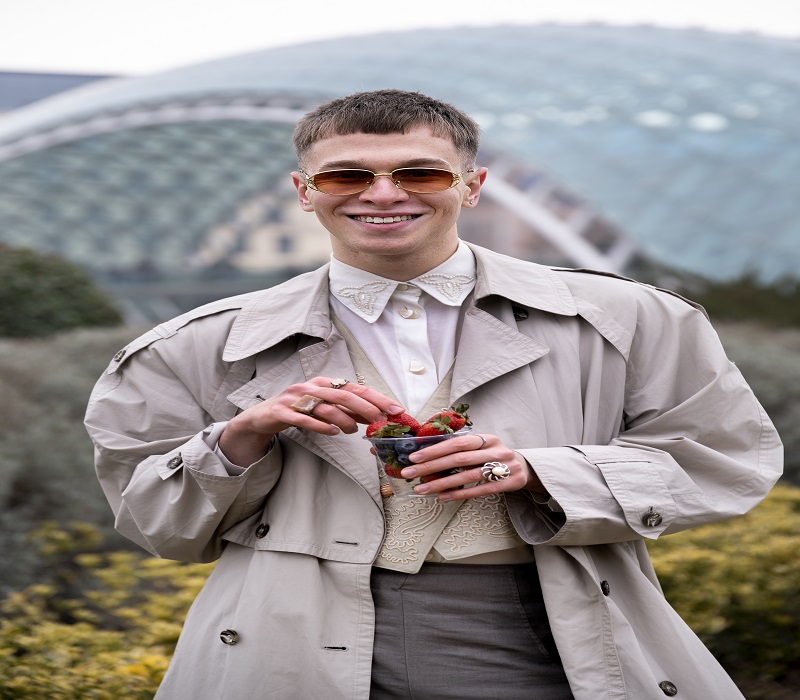Introduction
The internet is flooded with Paige Bueckers AI photos—some hilarious, some shockingly real-looking. From fake magazine covers to fantasy basketball posters, AI-generated images of the UConn superstar are going viral. But how are these made? Are they harmless fun, or do they risk misleading fans?
In this article, we’ll break down everything you need to know: the technology behind these fakes, why they’re spreading, and how to tell what’s real. Whether you’re a curious fan or just baffled by AI trends, here’s the simple truth.
The Rise of AI-Generated Sports Imagery
Artificial intelligence has changed how we create and share content. For athletes like Paige Bueckers, this means fans can now generate photos of her that never happened. A picture of her dunking? AI can fake it. A fake ad showing her endorsing a product? Easy.
Tools like MidJourney, DALL-E, and Stable Diffusion analyze thousands of real images to mimic faces, poses, and even jerseys. The results range from obvious fakes to images so convincing they trick even die-hard fans.
But why Paige Bueckers? Her massive social media following and iconic playing style make her a prime target for AI experiments. Fans love sharing these edits, but the trend isn’t without risks.
How AI Creates Fake Photos of Paige Bueckers
Creating an AI-generated image of Paige takes just minutes. Here’s how it works:
- Data Training – AI studies real photos of Paige to learn her facial features, expressions, and even how she moves on the court.
- Text Prompts – Users type commands like “Paige Bueckers in a spacesuit holding a basketball, hyper-realistic”.
- Image Generation – The AI assembles a new image pixel by pixel, blending elements from its training data.
- Refinement – Some creators tweak the image further in Photoshop to fix flaws (like distorted hands or weird shadows).
While most AI photos are just for fun, some cross into dangerous territory—like fake injury announcements or fabricated scandals.
Why These AI Photos Go Viral
Not all AI images get attention, but Paige Bueckers’ edits spread fast. Here’s why:
1. Fan Creativity
Fans love reimagining their favorite players in wild scenarios. A fake photo of Paige as a medieval knight or a sci-fi hero grabs laughs and shares.
2. Shock Value
Some AI photos look too real. A fake Sports Illustrated cover or a made-up WNBA draft moment can trick casual viewers at first glance.
3. Social Media Algorithms
Platforms like Twitter and TikTok prioritize eye-catching content. Bizarre or ultra-realistic AI images get boosted, even if they’re labeled as fake.
However, virality has downsides. Not everyone realizes these photos are fake, leading to misinformation or false narratives.
The Dark Side of AI Sports Photos
While many AI edits are harmless, the trend raises serious concerns:
Deepfakes and Misinformation
Advanced AI can now generate fake videos (deepfakes). Imagine a fabricated clip of Paige “announcing” a team transfer or insulting a rival. Such content could damage reputations or even affect betting markets.
False Endorsements
Scammers have used AI to fake celebrity endorsements. A realistic-looking ad with Paige promoting a shady product could fool fans into spending money.
Privacy and Consent
Paige never posed for these AI images—yet her likeness is used anyway. While legal gray areas exist, many argue athletes should control how their image is manipulated.
How to Spot Fake AI Photos of Paige Bueckers
Before sharing that viral pic, check for these red flags:
- Unnatural Details: AI struggles with fine textures like hair strands, jewelry, or wrinkles in clothing.
- Strange Lighting: Shadows may face the wrong way, or skin might look oddly smooth.
- Background Glitches: Look for warped objects (like bent basketball hoops) or blurry crowds.
- Source Check: Is the post from a verified account or a random fan page?
When in doubt, reverse-image search the photo or check Paige’s official social media for confirmation.
What’s Next for AI and Sports Imagery?
AI-generated content isn’t going away. In fact, it’s getting harder to detect. Here’s what to expect:
1. Watermarking
Some leagues may require AI tools to label fake images automatically. The NBA could add digital signatures to real photos.
2. Player Backlash
As AI fakes improve, athletes like Paige may push for laws protecting their likeness. Some states already ban deepfakes without consent.
3. Fan Guidelines
Social media platforms might add pop-up warnings like “This image is AI-generated” to curb misinformation.
Final Thoughts
Paige Bueckers AI photos are a fascinating—and sometimes scary—example of technology’s power. They showcase creativity but also risk spreading lies.
As fans, we should enjoy the fun edits while staying skeptical. Always verify before sharing, and remember: if a photo of Paige seems too wild to be true, it probably is.
for more https://jalbiteblog.fun/
